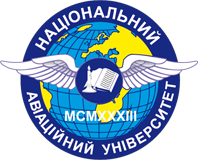DIGITAL ART AND ITS INFLUENCE ON TRADITIONAL ART AT THE BEGINNING OF THE 21ST CENTURY
DOI:
https://doi.org/10.32782/uad.2024.2.7Keywords:
traditional art, digital painting, computer art, digital technologiesAbstract
The article is dedicated to analyzing the impact of digital art on traditional genres of painting. Digital painting not only becomes an essential component of contemporary culture but also a significant factor in the evolution of traditional art forms. Digital painting has demonstrated its undeniable differences from traditional forms of visual art. Firstly, due to the incredible flexibility and speed of graphic editors. Secondly, thanks to the possibility of making corrections, both in the process of creating an artwork and in the final result. In addition, digital art opens up new horizons for artists, allowing them to experiment with innovative techniques and materials that were previously unavailable. This contributes to the growth of their creativity and enrichment of the arsenal of expressive means, thereby expanding opportunities for artists’ self-expression. The opening of online platforms for publishing and exchanging digital artworks allows artists from around the world to share their creativity, increasing the diversity of interpretations and deepening cultural dialogue. Thus, digital art not only transforms traditional genres of painting but also opens up new avenues for collaboration, creative development, and interaction between artists and viewers. Moreover, digital art makes a significant contribution to the development of modern technologies, stimulating innovations in software, computer graphics, and visualization. However, along with all its advantages, digital art has also posed new challenges and questions regarding authenticity and originality, stimulating the search for new ways of justification in the context of significance and mastery in contemporary technological art. The integration of digital painting into traditional art will become a new chapter in the global art history of painting, forming a new stage in its evolution, where traditional methods merge with innovative technologies, creating new artistic works that will forever remain in the history of art.
References
Білецька Н. Цифрове мистецтво як засіб формування сучасної культури. Наукові записки Національного університету «Острозька академія». Серія «Філософія». 2020. № 27 С. 36–43.
Городецький В. Комп’ютерні технології в мистецтві : навчальний посібник. Івано-Франківськ :Симфонія форте, 2018. 52 с.
Євтушенко О. Взаємодія глядача з мистецтвом у цифровій епосі. Культурологія: актуальні проблеми, 2020. С. 25–31.
Почепцов Г.Г. Теорія комунікації. Київ : Ваклер; Рефел-Бук, 2001. 656 с.
Чембержі Д., Пашукова С., Єрмак І. Цифрове мистецтво у соціально-культурному просторі: вплив, взаємодія та перспективи. Актуальні питання гуманітарних наук : міжвузівський збірник наукових праць молодих вчених Дрогобицького державного педагогічного університету імені Івана Франка, 2023. С. 144–149.
Алєксєнко. Н. Цифрове мистецтво: українські художники, які змінюють реальність. 2022. URL: https://ukrainianmoment.format21.org/uk/kultura/cyfrove-mystectvo-ukrayinski-hudozhnyky/ (дата звернення: 01.04.2024).
Альтман Д. NFT: що це таке і як працює. 2021. URL: https://bazilik.media/nft-shcho-tse-take-i-iakpratsiuie/(дата звернення: 01.04.2024).
Грау О. Медіаарт потребує дослідження та архівів. 2011. URL: https://www.lvivcenter.org/discussions/a-lecture-by-prof-oliver-grau-2/ (дата звернення: 02.04.2024).








